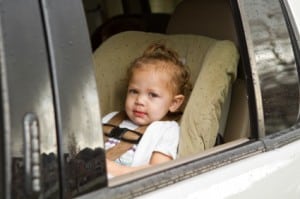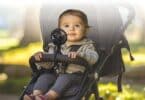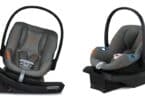
To kick off the campaign, the organizations held a press conference in Boca Raton, FL, hoping to educate the public on just how dangerous leaving a child in a vehicle can be. After the conference, the Boca Raton Fire and Rescue Services provided a demonstration on how they respond to emergency calls concerning children left in vehicles and how they handle lock-ins. Tips for parents, caregivers and passerbys were also given at the conference.
“Whether you are a parent or a caregiver or just a concerned bystander, you can help save lives,” said Kate Carr, President and CEO of Safe Kids Worldwide. “We are urging everyone to use ACT: Avoid hyperthermia-related deaths by never leaving your child alone in a car and always locking doors and trunks; Create reminders and habits for you and your child’s caregivers to serve as a safety net to ensure you don’t forget your child; and Take action if you see a child unattended in a vehicle by immediately calling 911.”
Temperatures inside of a vehicle can raise nearly 20 degrees in just 10 minutes. Leaving a window cracked or down has no effect on the rising heat. For children, the rising temperature can be lethal. Their bodies heat up three to five times faster than the average adult’s, resulting in hyperthermia. In a matter of minutes, the child’s condition can become severe or fatal.
“Kids react differently to heat than adults,” said Dr. Leticia Ryan of Children’s National Medical Center, Emergency Medicine and Trauma Services. “Infants and young children haven’t fully developed the internal systems regulating body temperature, putting them at much greater risk for organ failure and death when exposed to excessive heat. We see this all too often in the emergency room, and it’s absolutely devastating.”
More than 500 children have died from hyperthermia since 1998 and the number of near deaths is substantially higher. More than half of all fatalities have occurred because the caregiver was distracted, resulting in accidentally leaving the child in the vehicle. Thirty percent of all deaths were due to children playing in an empty, unattended vehicle and becoming trapped inside. Seventeen percent of those deaths were due to the child being left in the vehicle intentionally.
Just so parents know, it is now considered a crime, punishable by law, in most stated to leave your child in a vehicle unattended, even for just a moment. The greatest risk, however, is completely unintentional; parents become distracted and forget that their child is with them. Miscommunication between caregivers and parents result in children left in vehicles; these situations happened regularly and we read about them each and every year.
Tips provided by Safe Kids Worldwide and the GM Foundation can help parents and caregivers remember to take their child out of the vehicle before walking away. These tips can also ask that bystanders be an integral part in keeping children safe from hyperthermia.
The following section was provided by Safe Kids Worldwide:
Together, we can cut down the number of deaths and near-misses by remembering to ACT.
- Avoid heat stroke-related injury and death by:
- Never leaving your child alone in the car, even for a minute.
- Consistently locking unattended vehicle doors and trunks.
- Create reminders and habits that give you and your child’s caregiver a safety net:
- Establish a peace-of-mind plan. When you drop off your child, make a habit of calling or texting all other caregivers, so all of you know where your child is at all times.
- Place a purse, briefcase, gym bag, cell phone or an item that is needed at your next stop in a back seat.
- Set the alarm on your cell phone or computer calendar as a reminder to drop your child off at childcare.
- Take action if you see an unattended child in a vehicle:
- Dial 911 immediately and follow the instruction that emergency personnel provide – they are trained to determine if a child is in danger.
More information can be found at www.safekids.org/heatstroke
Related Articles:
- Toddler Found Alive after Spending Days with Deceased Mother
- Toddler Dies of Dehydration and Acute Kidney Failure after Being Sent Home for Hospital THREE Times
- South Africa to Promote Exclusive Breastfeeding during First Six Months of Life for All Infants






